
100% alpaka
od 95.00 Kč /50g
Cenu za klubka počítáme podle spotřeby při výrobě modelu v nejmenší velikosti a nejlevnější variantě příze. Rádi byste ještě lepší cenu? Třeba ji najdete mezi DROPS Deals!
Always Beautiful
DROPS nákrčník, čepice a rukavice – palčáky pletené vroubkovým vzorem z dvojité příze "Alpaca".
DROPS design: model č. z-686
Skupina přízí: A + A nebo C
-------------------------------------------------------
NÁKRČNÍK:
Velikost: S/M – L/XL – XXL/XXXL
Materiál: DROPS ALPACA firmy Garnstudio
150-200-200 g, barva č.517, šedá
150-200-200 g, barva č.501, světlá šedá
DROPS JEHLICE č.3,5 – nebo velikosti potřebné k upletení zkušebního vzorku o rozměrech 20 ok x 41 řad vroubkovým vzorem dvojitou přízí = 10 x 10 cm.
DROPS PERLEŤOVÝ KNOFLÍK č.526 (průměr 20 mm): 5 ks pro všechny velikosti.
---------------------
ČEPICE:
Velikost: S/M – M/L – L/XL
Obvod hlavy: 54/56 – 56/58 – 58/60 cm
Materiál: DROPS ALPACA firmy Garnstudio
50-100-100 g, barva č.517, šedá
50-100-100 g, barva č.501, světlá šedá
DROPS KRUHOVÁ JEHLICE (60 cm) č.4 – nebo velikosti potřebné k upletení zkušebního vzorku o rozměrech 19 ok x 38 řad vroubkovým vzorem dvojitou přízí = 10 x 10 cm.
DROPS PERLEŤOVÝ KNOFLÍK č.525 (průměr 15 mm): 2 ks pro všechny velikosti.
---------------------
RUKAVICE - PALČÁKY:
Velikost: S/M – M/L – L/XL
Materiál: DROPS ALPACA firmy Garnstudio
50-100-100 g, barva č.517, šedá
50-100-100 g, barva č.501, světlá šedá
DROPS JEHLICE a PONOŽKOVÉ JEHLICE č.4 – nebo velikosti potřebné k upletení zkušebního vzorku o rozměrech 19 ok x 38 řad vroubkovým vzorem dvojitou přízí = 10 x 10 cm.
DROPS PERLEŤOVÝ KNOFLÍK č.525 (průměr 15 mm): 5 ks pro všechny velikosti.
-------------------------------------------------------
Náhradní příze – Podívejte se, jak změnit přízi
Skupina přízí A až F – Neměňte návod, změňte přízi
Spotřeba příze při použití náhradní příze – Využijte náš převodník
-------------------------------------------------------

100% alpaka
od 95.00 Kč /50g
Cenu za klubka počítáme podle spotřeby při výrobě modelu v nejmenší velikosti a nejlevnější variantě příze. Rádi byste ještě lepší cenu? Třeba ji najdete mezi DROPS Deals!
- Česky
- Dansk
- Deutsch
- Eesti keel - not translated
- English (UK/cm)
- English (US/in)
- Español
- Français
- Íslenska
- Italiano
- Magyar
- Nederlands
- Norsk
- Polski
- Português
- Suomi
- Svenska
- English (UK/cm), Bulgaria
- English (UK/cm), Croatia
- English (UK/cm), Greece
- English (UK/cm), Latvia
- English (UK/cm), Lithuania
- English (UK/cm), Romania
- English (UK/cm), Slovenia
- Česky, Slovakia
Návod
V řadách: pleteme stále hladce, lícové i rubové řady. 1 vroubek = 2 řady hladce.
V kruhových řadách: pleteme střídavě 1 kruhovou řadu hladce, 1 obrace. 1 vroubek = 2 kruhové řady.
TIP:
Pokaždé, když otáčíme práci uprostřed řady, sejmeme první oko hladce, přízi pořádně utáhneme a teprve pak pleteme dál – díky tomuto postupu nebudou v místech přechodů jednotlivých zkrácených řad vznikat velké dírky.
TIP - PŘIDÁVÁNÍ:
Přidáváme nahozením; v následující řadě pleteme nahození hladce za zadní nit, aby v pletenině nevznikaly dírky.
-------------------------------------------------------
NÁKRČNÍK:
Pleteme kolmo od předního okraje jedné légy k okraji druhé.
Na jehlice č.3,5 nahodíme 1 vláknem šedé + 1 vláknem světle šedé (= dvojitá příze) příze Alpaca 64-72-80 ok a pleteme vroubkovým vzorem – viz výše – do výše 4 cm (= léga). Pak pokračujeme vroubkovým vzorem a SOUČASNĚ plete,e zkrácené řady, takto – začínáme lícovou řadou: *upleteme 8 ok, práci otočíme – viz TIP - PŘIDÁVÁNÍ – a pleteme zpáteční řadu, upleteme 38-46-56 ok, práci otočíme a pleteme zpáteční řadu, upleteme 48-56-64 ok, práci otočíme a pleteme zpáteční řadu, upleteme 2 řady nad všemi oky*, *-* opakujeme.
Ve výši asi 43-45-47 cm – měřeno podél okraje průkrčníku, tj. podél kratší strany (máme dokončenu celou sekvenci zkrácených řad) – upleteme 4 cm výšky vroubkovým vzorem nad všemi oky (= léga). Ve výši asi 47-49-51 cm u horního okraje a asi 125-131-137 cm - měřeno podél dolního okraje mezi légami (= zvlněný okraj) – všechna oka uzavřeme.
DOKONČENÍ:
Pravou légu položíme přes levou a přišijeme 5 ozdobných knoflíků – knoflíky nebudeme zapínat, přišijeme je napevno skrz obě vrstvy pleteniny: začneme 2 cm od okraje průkrčníku a každý další přišíváme po asi 6,5-7,5-8,5 cm výšky pleteniny.
----------------------------------------------------------
ČEPICE:
Pleteme v řadách na kruhové jehlici.
Na kruhovou jehlici č.4 nahodíme 1 vláknem šedé + 1 vláknem světle šedé (= dvojitá příze) příze Alpaca 104-106-110 ok a upleteme 1 rubovou řadu obrace a 1 lícovou řadu hladce. Pokračujeme vroubkovým vzorem – viz výše. Ve výši 4 cm uzavřeme na začátku lícové řady 10 ok (= ozdobný pásek) = 94-96-100 ok. Upleteme 63-64-67 ok, přízi odstřihneme a práci otočíme. Řada nyní začíná zde (= střed zadní strany). Pleteme vroubkovým vzorem v řadách nad všemi oky (tj. pleteme přes místo, kde začínala řada dříve) = 94-96-100 ok. Ve výši 12 cm ujmeme rovnoměrně 8 ok = 86-88-92 ok. Toto ujímání zopakujeme ještě ve výši 16 cm = 78-80-84 ok. Ve výši 18 cm ujmeme rovnoměrně 10 ok a toto ujímání opakujeme vždy po 2 cm výšky pleteniny, celkem 4x = 38-40-44 ok. Ve výši 25 cm splétáme každá 2 hladce = 19-20-22 ok. V následující řadě opět spleteme každá 2 oka hladce = v řadě zbývá 10-10-11 ok. Přízi odstřihneme, protáhneme zbylými oky, stáhneme a zapošijeme.
DOKONČENÍ:
Čepici uprostřed zadní strany sešijeme. Ozdobný pásek přeložíme přes čepici a přišijeme na něj 2 ozdobné knoflíky – knoflíky nebudeme zapínat, přišijeme je napevno skrz obě vrstvy pleteniny.
----------------------------------------------------------
RUKAVICE:
PRAVÁ RUKAVICE:
Pleteme v řadách.
Na jehlice č.4 nahodíme 1 vláknem šedé + 1 vláknem světle šedé (= dvojitá příze) příze Alpaca 45-47-49 ok a pleteme vroubkovým vzorem – viz výše. Ve výši 4 cm uzavřeme na začátku rubové řady 10 ok (= ozdobný pásek) = 35-37-39 ok. Ve výši 8,5-9,5-10 cm – končíme rubovou řadou – si označíme 18.-19.-20. oko. Nyní tvarujeme klínek palce - přidáme 1 oko na každé straně označeného oka - viz TIP - PŘIDÁVÁNÍ. Toto přidávání opakujeme na každé straně přidaných ok (tj. před a za vznikajícím klínem) v každé 4. řadě, celkem 5-6-7x = 45-49-53 ok. Ve výši 15,5-16,5-18 cm odložíme 11-13-15 ok palce na pomocnou jehlici. V následující řadě nahodíme za odloženými oky palce 1 oko nové = na jehlici zbývá 35-37-39 ok. Pleteme do výše 23-24-26 cm. V následující lícové řadě ujmeme rovnoměrně 3 oka = 32-34-36 ok. Upleteme 3 řady hladce. V následující řadě ujmeme rovnoměrně 4 oka = 28-30-32 ok. Toto ujímání opakujeme v každé 2. řadě ještě 4x = 12-14-16 ok. Upleteme 1 řadu hladce. V následující řadě splétáme každá 2 oka hladce = 6-7-8 ok. Přízi odstřihneme, protáhneme zbylými oky a zapošijeme.
PALEC:
Odložených 11-13-15 ok palce vrátíme zpět na ponožkové jehlice č.4 a z okraje za oky palce nabereme ještě 2 oka nová = 13-15-17 ok. Pleteme vroubkovým vzorem v kruhových řadách na ponožkových jehlicích – viz výše. Když je palec vysoký 5-5,5-6 cm, spleteme každá 2 oka hladce = 7-8-9 ok. V následující kruhové řadě opět spleteme každá 2 oka hladce = 4-4-5 ok. Přízi odstřihneme, protáhneme zbylými oky a zapošijeme.
DOKONČENÍ:
Rukavici po straně sešijeme – šev vedeme vnější částí krajových ok, aby byl co nejjemnější. Na okraj pásku přišijeme na ozdobu 2 knoflíky – přišíváme skrz obě vrstvy pleteniny.
LEVÁ RUKAVICE:
Pleteme stejně jako pravou rukavici, jen zrcadlově převrácenou; tj. 10 ok pro ozdobný pásek uzavřeme na začátku lícové řady.
Schéma
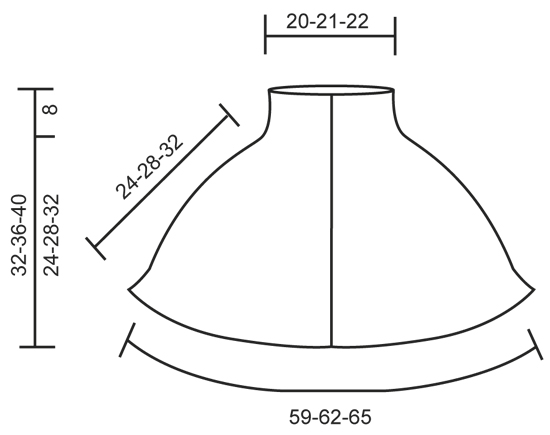
Jak můžete zacházet s našimi návody? Můžete sdílet DROPS návody online, s použitím původní fotky, uvedením originální příze, jména a čísla modelu. Ale JE ZAKÁZÁNO jakkoli reprodukovat či kopírovat celé návody v digitální podobě. Obchody s přízí mohou využívat databázi DROPS návodů k podpoře prodeje našich produktů. Návody si můžete vytisknout v libovolném počtu kopií. Žádáme vás o jedinou věc: nedělejte žádné úpravy a změny v tištěném originálu, ani původní návod v tištěné podobě nijak nedoplňujte. A také respektujte pravidlo DROPS a návody poskytujte klientům zdarma. Vydavatele, kteří by rádi zveřejnili naše návody v tištěných knihách nebo časopisech, prosíme, aby nás kontaktovali - rádi jim poskytneme podrobnější informace. Prodej výrobků vytvořených podle návodů DROPS je povolen pouze v případě, že jde o prodej jednotlivých kusů nebo výrobu na zakázku. Větší komerční využití návodů dovoleno není. U každého výrobku musí být rovněž jasně a zřetelně uvedeno, že jde o výrobek podle modelu z kolekce DROPS DESIGN. Opatřit nášivkami či visačkami oděvy, které využívají DROPS DESIGN je podmíněno uvedením následujícího textu: "Model DROPS DESIGN vytvořil/a...(doplňte jméno člověka, který oděv vyrobil)". Použití fotografií DROPS pro marketingové účely/prodej je povoleno výhradně v přímé souvislosti s použitím/prodejem přízí, pomůcek a doplňků DROPS. Fotografie nesmí být vystřižené, ořezané ani jinak upravené a logo na nich musí zůstat zřetelně viditelné.
Vyhrazujeme si právo kdykoli stáhnout povolení k užívání, a to bez udání důvodu.
Každý náš návod je doprovázen speciálními video-ukázkami, které vás navedou.
Tyto podrobné video-návody vás povedou "krok za krokem":
Proč je napětí příze u pletení/ háčkování tak důležité?
Napětí příze (hustota úpletu) určuje konečné míry vaší práce a obvykle se měří na vzorku 10 x 10 cm. Spočítáme takto: počet ok na šířku x počet řad na výšku - např.: 19 ok x 26 řad = 10 x 10 cm.
Napětí příze je velmi individuální; někteří lidé pletou/ háčkují volně, zatímco jiní značně utahují. Napětí příze přizpůsobíte změnou velikosti jehlic, proto doporučenou velikost jehlic berte pouze jako vodítko! Je důležité, abyste zajistili, že VAŠE napětí příze odpovídá napětí uvedenému ve vzoru. Pokud budete pracovat s jiným napětím příze než je uvedeno ve vzoru, vaše spotřeba příze a konečné rozměry vaší práce se budou lišit.
Napětí příze také určuje, které příze je možné vzájemně zaměňovat. Pokud dosáhnete stejného napětí příze, můžete snadno zaměnit jednu přízi za druhou.
Viz lekce DROPS: Jak změřit napětí příze/ zkušební vzorek
Viz video DROPS: Jak vypracovat zkušební vzorek napětí příze
Jak zjistím, kolik klubek příze potřebuji?
Požadované množství příze je uvedeno v gramech, např.: 450 g. Pro výpočet potřebného množství klubek musíte nejdříve vědět, kolik gramů je v 1 klubku (25 g, 50 g nebo 100 g). Tyto informace jsou dostupné po kliknutí na jednotlivé druhy přízí na našich stránkách. Vydělte požadované množství množstvím každého klubka. Pokud má například klubko 50 g (nejběžnější množství), výpočet bude následující: 450 / 50 = 9 klubek.
Mohu použít jinou přízi než jaká je doporučena u vybraného vzoru?
Při záměně jedné příze za druhou je důležité, aby napětí příze (hustota úpletu) při pletení/ háčkování zůstala stejná. To proto, aby rozměry hotového oděvu odpovídaly poskytnutému náčrtu. Stejného napětí příze je snazší dosáhnout pomocí přízí ze stejné skupiny. Je také možné pracovat s vícero vlákny tenčí příze najednou, a tak dosáhnout stejného napětí jako při práci se silnější přízí. Vyzkoušejte náš převodník přízí. Doporučujeme vám si vždy vypracovat zkušební vzorek (swatch).
POZNÁMKA: při záměně přízí se může oděv výrazně lišit od oděvu na fotografii, to díky rozdílným vlastnostem a složení každé příze.
Viz lekce DROPS: Mohu použít jinou přízi než je uvedena ve vzoru?
Co to jsou skupiny přízí DROPS?
Všechny naše příze jsou rozděleny do skupin přízí (od A do F) podle síly a napětí příze – skupina A zahrnuje nejtenčí příze a skupina F ty nejsilnější. Toto vám usnadní hledání alternativních přízí k našim vzorům, pokud byste chtěli přízi vyměnit. Všechny příze stejné skupiny mají podobné napětí příze (hustotu úpletu) a můžete je tak snadno vzájemně nahrazovat. Jednotlivé druhy přízí se nicméně liší složením a vlastnostmi, hotové dílo tak získá na jedinečnosti jak na pohled tak na omak.
Kliknutím zde zobrazíte přehled přízí v jednotlivých skupinách.
Jak použít převodník přízí (yarn calculator)?
V horní části všech našich vzorů najdete odkaz na náš převodník přízí (yarn calculator), což je užitečný nástroj, pokud byste chtěli použít jinou než doporučenou přízi. Vyplněním druhu příze, kterou si přejete vyměnit, množství (ve vaší velikosti) a počtu vláken, vám převodník nabídne vhodné alternativní příze se stejným napětím příze (hustotou úpletu). Dále vám prozradí, kolik alternativní příze budete potřebovat a zda budete muset pracovat s vícero vlákny najednou. Většina klubek má hmotnost 50 g (některá 25 g nebo 100 g).
Pokud je vzor vypracován ve vícero barvách najednou, bude nutné každou barvu vypočítat samostatně. Stejně tak, pokud je vzor vypracován s několika vlákny různých přízí (například 1 vlákno alpaky a 1 vlákno Kid-Silk), budete muset najít alternativy jednotlivě, tedy pro každou zvlášť.
Kliknutím zde zobrazíte náš převodník přízí
Proč u vzorů stále uvádíte příze, které se již nevyrábí?
Protože různé příze mají různé vlastnosti a textury, rozhodli jsme se původní přízi v našich vzorech zachovat. Můžete však snadno najít dostupné alternativy mezi našimi ostatními druhy přízí pomocí našeho převodníku nebo si jednoduše vybrat přízi ze stejné skupiny přízí.
Je možné, že někteří prodejci mají přízi stále na skladě, nebo že někdo má doma pár klubek, pro která by rád našel vzory.
Převodník přízí vám nabídne jak alternativní přízi, tak i její požadované množství.
Jakou mám zvolit velikost?
Pokud si nejste jistí jakou velikost vypracovat, můžete například změřit oděv, který již vlastníte a jehož velikost se vám líbí. Následně si zvolte velikost porovnáním těchto mír s těmi v tabulce velikostí vybraného vzoru.
Tabulku velikostí najdete ve spodní části vzoru.
Viz lekce DROPS: Jak číst tabulku velikostí
Proč mi nevychází velikost zkušebního vzorku na doporučené síle jehlic?
Velikost jehlic uvedená ve vzoru slouží pouze jako vodítko, důležité je dodržet napětí příze (hustotu úpletu). A protože napětí příze je velmi individuální, budete muset upravit velikost jehlic tak, abyste zajistili stejné napětí jaké je uvedené ve vzoru – možná budete muset přizpůsobit sílu jehlic o 1 či dokonce 2 velikosti abyste dosáhli správného napětí. Za tímto účelem vám doporučujeme vypracovat zkušební vzorky.
Pokud byste pracovali s jiným napětím příze než je uvedeno, rozměry hotového oděvu se mohou od rozměrů uvedených na náčrtu lišit.
Viz lekce DROPS: Jak změřit napětí příze/ zkušební vzorek
Viz video DROPS: Jak vypracovat zkušební vzorek
Proč je vzor vypracován shora dolů?
Práce s oděvem shora dolů poskytuje větší flexibilitu a prostor pro individuální úpravy. Například je snazší si oděv v průběhu práce vyzkoušet a také upravit délku sedla a průramků.
Návody vše pečlivě vysvětlují krok za krokem, ve správném pořadí. Schémata jsou přizpůsobena směru pletení a vypracována jako obvykle.
Jak správně číst schéma u pletení?
Schéma zobrazuje všechny řady/ kruhové řady, a každé oko jak se jeví při pohledu z lícové strany. Čte se zdola nahoru, zprava doleva. 1 čtvereček = 1 oko.
Při práci v řadách (tam a zpět) je každá lichá řada řadou lícovou a každá sudá řada je řadou rubovou. Při práci v rubových řadách je nutné vypracovávat schéma obráceně: zleva doprava, hladká oka pleteme obrace, oka pletená obrace vypleteme hladce atd.
Při práci v kruhových řadách je každá řada řadou lícovou a schéma je tedy ve všech řadách vypracováno zprava doleva.
Viz lekce DROPS: Jak číst schémata u pletení
Jak správně číst schéma u háčkování?
Schéma zobrazuje všechny řady/ kruhové řady, a každé oko jak se jeví při pohledu z lícové strany. Vypracovává se zdola nahoru, zprava doleva.
Při práci v řadách (tam a zpět) je každá lichá řada řadou lícovou a každá sudá řada je řadou rubovou. Při práci v rubových řadách je nutné vypracovávat schéma obráceně: zleva doprava.
Při práci v kruhových řadách je každá řada řadou lícovou a schéma je tedy ve všech řadách vypracováno zprava doleva.
Při práci s kruhovým schématem začínáme uprostřed a postupujeme směrem proti směru hodinových ručiček, řadu po řadě.
Řady obvykle začínají daným počtem řetízkových ok (ekvivalentní výšce následujícího oka), což bude buď znázorněno ve schématu nebo vysvětleno ve vzoru.
Viz lekce DROPS: Jak číst schémata u háčkování
Jak vypracovat několik schémat zároveň v jedné řadě/ kruhové řadě?
Pokyny pro práci s vícero schématy zároveň ve stejné řadě/kruhové řadě budou často popsány takto: „háčkujeme vzor A.1, A.2, A.3 celkem 0-0-2-3-4x". To znamená, že A.1 vypracujete jednou, následně A.2 vypracujete jednou a A.3 opakujete (na šířku) tolikrát, kolikrát je pro vaši velikost stanoveno – v tomto případě takto: S = 0 krát, M = 0 krát, L=2 krát, XL= 3 krát a XXL = 4 krát.
Se schématy se pracuje jako obvykle: začněte první řadou v A.1, poté vypracujte první řadu v A.2 atd.
Viz lekce DROPS: Jak číst schémata u pletení
Viz lekci DROPS: Jak číst schémata u háčkování
Proč jsou rukávy u větších velikostí kratší?
Celková šířka oděvu (od zápěstí k zápěstí) bude u větších velikostí větší, přestože rukávy jsou kratší. Větší velikosti mají delší průramky a širší náramenice, aby dobře seděly pro všechny velikostech.
Odkud měřím délku oděvu?
Rozměry na náčrtu/ schématu poskytují informace k celkové délce oděvu. Pokud se jedná o svetr nebo kabátek, délka se měří od nejvyššího bodu na náramenici nejblíže výstřihu směrem dolů ke spodní části oděvu. NENÍ měřeno od vrcholu ramene. Stejně se měří i délka sedla, od nejvyššího bodu náramenice dolů k místu, kde se sedlo dělí na trup a rukávy.
U kabátků, pokud není výslovně uvedeno jinak, se nikdy neměří délka na vnější straně légy. Vždy měřte délku na vnitřní straně.
Viz lekce DROPS: Jak číst schéma
Co znamená opakování?
Schémata se často opakují dokola nebo na výšku. 1 opakování na schématu tak, jak se jeví ve vzoru. Pokud je uvedeno vypracujte 5 opakování A.1 v řadě, pak vypracujete A.1 celkem 5 krát po sobě/ vedle sebe v jedné řadě. Pokud je uvedeno vypracujte 2 opakování A.1 svisle/ na výšku, vypracujte celé schéma jednou, následně začněte znovu od počátku následující řady a vypracujte celé schéma ještě jednou.
Proč je počet počátečních nahozených ok vyšší než počet, s kterým dále pracujeme?
Řetízková oka jsou o něco užší než sloupky. Abyste předešli příliš staženým okům nahozeného okraje, jednoduše uháčkujte více ok řetízku. Počet ok bude v následující řádě upraven tak, aby odpovídal vzoru a náčrtu.
Proč při práci shora dolů přidáváme oka pro pružný lem?
Pružný lem se oproti například lícovému žerzeji jeví mnohem staženější. Přidáním ok před vypracováním lemu se vyhnete viditelnému rozdílu v šířce přechodu mezi pružným lemem a zbytkem trupu.
Proč před uzavíráním lemu přidáváme oka?
Je snadné uzavřít lem příliš pevně. Nahazováním ok při uzavírání lemu (a současným uzavíráním těchto nahození) předejdete příliš utaženému okraji.
Viz video DROPS: Jak uzavřít pomocí nahození (yo)
Jak střídavě ujmout/ přidat v každé 3. a 4. řadě/ kruhové řadě?
Pro dosažení rovnoměrného přidání (nebo ujmutí) můžete přidat např.: každou 3. a 4. řadu střídavě takto: vypracujte 2 řady a přidejte v 3. řadě, vypracujte 3 řady a přidejte ve 4. Takto opakujte až po poslední přidávání..
Viz lekce DROPS: Přidávání či ujímání 1 oka střídavě v každé 3. a 4. řadě
Jak vypracuji kabátek v kruhových řadách namísto v řadách (tam a zpět)?
Pokud dáváte přednost práci v kruhových řadách namísto v řadách (tam a zpět), můžete samozřejmě vzor přizpůsobit a to tak, že přidáte můstky doprostřed přední části (obvykle 5 ok). Dále pak postupujete podle pokynů. Kde byste normálně otočili práci a pracovali z rubové strany, jednoduše pokračujete dál přes můstek v kruhových řadách. Nakonec kabátek rozstřihnete, naberete stehy pro vypracování légy a zakryjete rozstřižené okraje.
Viz video DROPS: Jak uplést a rozstřihnout můstek
Mohu vypracovat svetr v řadách (tam a zpět) namísto v kruhových řadách?
Pokud dáváte přednost práci v řadách (tam a zpět) namísto v kruhových řadách, můžete samozřejmě vzor přizpůsobit a to tak, že jednotlivé díly vypracujete samostatně a na konci je sešijete dohromady. Rozdělte počet ok trupu na polovinu, přidejte na každé straně 1 krajové oko (pro sešití) a vypracujte přední a zadní díl odděleně.
Viz lekce DROPS: Mohu vzor na kruhových jehlicích přizpůsobit rovným jehlicím?
Proč se popis vzoru mírně liší od modelu na fotografii?
Aby se zachovaly správné proporce, opakování vzoru se může v různých velikostech mírně lišit. Pokud nepracujete se stejnou velikostí v jaké je i oděv na fotografii, může se ten váš mírně lišit. Vzor byl pečlivě navržen a upraven tak, aby celkový dojem z oděvu zůstal stejný ve všech velikostech.
Dodržujte proto pokyny a schémata pro vaši velikost!
Jak změním oděv z dámské velikosti na pánskou?
Pokud jste našli vzor, který se vám líbí a který je k dispozici v dámské velikosti, není příliš těžké jej přizpůsobit velikosti pánské. Největší rozdíl bude v délce rukávů a trupu. Začněte pracovat na dámské velikosti o které si myslíte, že by seděla přes hrudník. Dodatečná délka bude vypracována těsně před uzavřením pro průramky. Pokud je vzor vypracován shora dolů, můžete přidat délku hned za průramky nebo před prvním ujmutím na rukávu.
Pokud jde o dodatečné množství příze, bude záležet na přidané délce, ale je lepší mít více klubek než-li méně.
Jak předejít línání u chlupatého oděvu?
Všechny příze mají přebytečná vlákna (z výroby), která mohou žmolkovat či odpadat. Česané příze (tj. chlupatější příze) mají více těchto volných, nadbytečných vláken, což způsobuje větší línání.
Línání také závisí na tom, co nosíme pod nebo přes oděv a zda to táhne vlákna příze. Není proto možné zaručit, že nedojde k žádnému línání
Níže je několik tipů, jak dosáhnout nejlepších výsledků při práci s chlupatější přízí:
1. Když je oděv hotový (než ho vyperete), silně s ním protřepejte, aby se volnější chloupky uvolnily. POZNÁMKA: NEPOUŽÍVEJTE čistící váleček na textil, kartáč ani jinou metodu, která tahá za přízi.
2. Oděv vložte do plastového sáčku a vložte jej do mrazáku – nízká teplota způsobí, že se vlákna k sobě méně přichytí a přebytečná vlákna se snadněji odloučí.
3. Ponechte několik hodin v mrazáku, než jej vyjmete a znovu protřepete.
4. Oděv perte podle pokynů na štítku příze.
Proč se na mé pletenině tvoří žmolky?
Žmolkování je přirozený proces, ke kterému dochází i u těch nejexkluzivnějších vláken. Je to přirozená známka opotřebení, kterému jde jen těžko předejít. Opotřebení je nejviditelnější v místech s vysokým třením, jako je podpaží či lemy.
Váš oděv může vypadat opět jako nový, když žmolky odstraníte pomocí kartáče na šaty nebo speciálního strojku - odžmolkovače.
Mezitím si můžete pročíst otázky a odpovědi, které k tomuto modelu položili ostatní, nebo navštívit skupinu DROPS Workshop na Facebooku, kde vám může poradit některá spřízněná duše!
Mohly by se vám líbit...
Always Beautiful |
|
 |
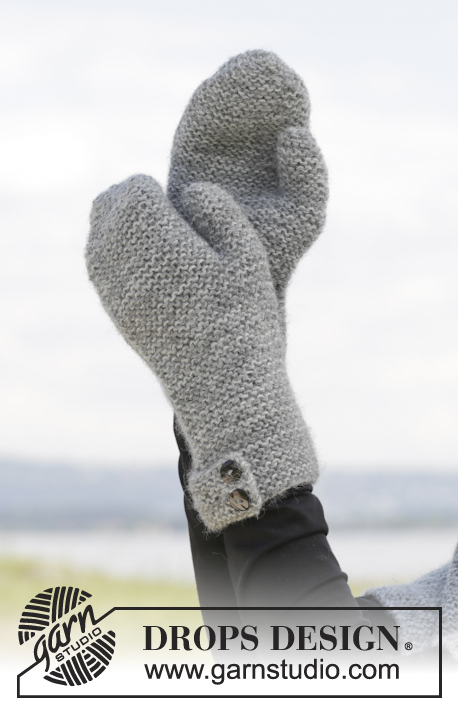 |
DROPS nákrčník, čepice a rukavice – palčáky pletené vroubkovým vzorem z dvojité příze "Alpaca".
DROPS 157-43 |
|
|
VROUBKOVÝ VZOR: V řadách: pleteme stále hladce, lícové i rubové řady. 1 vroubek = 2 řady hladce. V kruhových řadách: pleteme střídavě 1 kruhovou řadu hladce, 1 obrace. 1 vroubek = 2 kruhové řady. TIP: Pokaždé, když otáčíme práci uprostřed řady, sejmeme první oko hladce, přízi pořádně utáhneme a teprve pak pleteme dál – díky tomuto postupu nebudou v místech přechodů jednotlivých zkrácených řad vznikat velké dírky. TIP - PŘIDÁVÁNÍ: Přidáváme nahozením; v následující řadě pleteme nahození hladce za zadní nit, aby v pletenině nevznikaly dírky. ------------------------------------------------------- NÁKRČNÍK: Pleteme kolmo od předního okraje jedné légy k okraji druhé. Na jehlice č.3,5 nahodíme 1 vláknem šedé + 1 vláknem světle šedé (= dvojitá příze) příze Alpaca 64-72-80 ok a pleteme vroubkovým vzorem – viz výše – do výše 4 cm (= léga). Pak pokračujeme vroubkovým vzorem a SOUČASNĚ plete,e zkrácené řady, takto – začínáme lícovou řadou: *upleteme 8 ok, práci otočíme – viz TIP - PŘIDÁVÁNÍ – a pleteme zpáteční řadu, upleteme 38-46-56 ok, práci otočíme a pleteme zpáteční řadu, upleteme 48-56-64 ok, práci otočíme a pleteme zpáteční řadu, upleteme 2 řady nad všemi oky*, *-* opakujeme. Ve výši asi 43-45-47 cm – měřeno podél okraje průkrčníku, tj. podél kratší strany (máme dokončenu celou sekvenci zkrácených řad) – upleteme 4 cm výšky vroubkovým vzorem nad všemi oky (= léga). Ve výši asi 47-49-51 cm u horního okraje a asi 125-131-137 cm - měřeno podél dolního okraje mezi légami (= zvlněný okraj) – všechna oka uzavřeme. DOKONČENÍ: Pravou légu položíme přes levou a přišijeme 5 ozdobných knoflíků – knoflíky nebudeme zapínat, přišijeme je napevno skrz obě vrstvy pleteniny: začneme 2 cm od okraje průkrčníku a každý další přišíváme po asi 6,5-7,5-8,5 cm výšky pleteniny. ---------------------------------------------------------- ČEPICE: Pleteme v řadách na kruhové jehlici. Na kruhovou jehlici č.4 nahodíme 1 vláknem šedé + 1 vláknem světle šedé (= dvojitá příze) příze Alpaca 104-106-110 ok a upleteme 1 rubovou řadu obrace a 1 lícovou řadu hladce. Pokračujeme vroubkovým vzorem – viz výše. Ve výši 4 cm uzavřeme na začátku lícové řady 10 ok (= ozdobný pásek) = 94-96-100 ok. Upleteme 63-64-67 ok, přízi odstřihneme a práci otočíme. Řada nyní začíná zde (= střed zadní strany). Pleteme vroubkovým vzorem v řadách nad všemi oky (tj. pleteme přes místo, kde začínala řada dříve) = 94-96-100 ok. Ve výši 12 cm ujmeme rovnoměrně 8 ok = 86-88-92 ok. Toto ujímání zopakujeme ještě ve výši 16 cm = 78-80-84 ok. Ve výši 18 cm ujmeme rovnoměrně 10 ok a toto ujímání opakujeme vždy po 2 cm výšky pleteniny, celkem 4x = 38-40-44 ok. Ve výši 25 cm splétáme každá 2 hladce = 19-20-22 ok. V následující řadě opět spleteme každá 2 oka hladce = v řadě zbývá 10-10-11 ok. Přízi odstřihneme, protáhneme zbylými oky, stáhneme a zapošijeme. DOKONČENÍ: Čepici uprostřed zadní strany sešijeme. Ozdobný pásek přeložíme přes čepici a přišijeme na něj 2 ozdobné knoflíky – knoflíky nebudeme zapínat, přišijeme je napevno skrz obě vrstvy pleteniny. ---------------------------------------------------------- RUKAVICE: PRAVÁ RUKAVICE: Pleteme v řadách. Na jehlice č.4 nahodíme 1 vláknem šedé + 1 vláknem světle šedé (= dvojitá příze) příze Alpaca 45-47-49 ok a pleteme vroubkovým vzorem – viz výše. Ve výši 4 cm uzavřeme na začátku rubové řady 10 ok (= ozdobný pásek) = 35-37-39 ok. Ve výši 8,5-9,5-10 cm – končíme rubovou řadou – si označíme 18.-19.-20. oko. Nyní tvarujeme klínek palce - přidáme 1 oko na každé straně označeného oka - viz TIP - PŘIDÁVÁNÍ. Toto přidávání opakujeme na každé straně přidaných ok (tj. před a za vznikajícím klínem) v každé 4. řadě, celkem 5-6-7x = 45-49-53 ok. Ve výši 15,5-16,5-18 cm odložíme 11-13-15 ok palce na pomocnou jehlici. V následující řadě nahodíme za odloženými oky palce 1 oko nové = na jehlici zbývá 35-37-39 ok. Pleteme do výše 23-24-26 cm. V následující lícové řadě ujmeme rovnoměrně 3 oka = 32-34-36 ok. Upleteme 3 řady hladce. V následující řadě ujmeme rovnoměrně 4 oka = 28-30-32 ok. Toto ujímání opakujeme v každé 2. řadě ještě 4x = 12-14-16 ok. Upleteme 1 řadu hladce. V následující řadě splétáme každá 2 oka hladce = 6-7-8 ok. Přízi odstřihneme, protáhneme zbylými oky a zapošijeme. PALEC: Odložených 11-13-15 ok palce vrátíme zpět na ponožkové jehlice č.4 a z okraje za oky palce nabereme ještě 2 oka nová = 13-15-17 ok. Pleteme vroubkovým vzorem v kruhových řadách na ponožkových jehlicích – viz výše. Když je palec vysoký 5-5,5-6 cm, spleteme každá 2 oka hladce = 7-8-9 ok. V následující kruhové řadě opět spleteme každá 2 oka hladce = 4-4-5 ok. Přízi odstřihneme, protáhneme zbylými oky a zapošijeme. DOKONČENÍ: Rukavici po straně sešijeme – šev vedeme vnější částí krajových ok, aby byl co nejjemnější. Na okraj pásku přišijeme na ozdobu 2 knoflíky – přišíváme skrz obě vrstvy pleteniny. LEVÁ RUKAVICE: Pleteme stejně jako pravou rukavici, jen zrcadlově převrácenou; tj. 10 ok pro ozdobný pásek uzavřeme na začátku lícové řady. |
|

|
|
|
Vyrobili jste si tento nebo nějaký jiný z našich modelů? Přidejte ke svým fotkám na sociálních sítích tag #dropsdesign - díky tomu je uvidíme i my! Potřebujete s tímto návodem poradit?Otevřete-li si návod na stránce garnstudio.com, najdete tam výukových video-ukázek, Komentáře/Dotazy a další užitečné informace. © 1982-2024 DROPS Design A/S. Vyhrazujeme si veškerá práva. Tento dokument, včetně všech jeho dílčích částí, podléhá autorským právům. Podrobnější komentář k možnostem užití našich návodů najdete dole pod každým návodem na našich stránkách. |
|
V oblasti pletené a háčkované módy působí DROPS Design více než 40 let. Díky tomu vám můžeme nabídnout jednu z nejrozsáhlejších kolekcí modelů s bezplatnými návody dostupnými na internetu - navíc v 17 jazycích. K dnešnímu dni máme na 304 katalogů a 11422 návodů celkem - z nich je už 6303 dostupných v češtině.







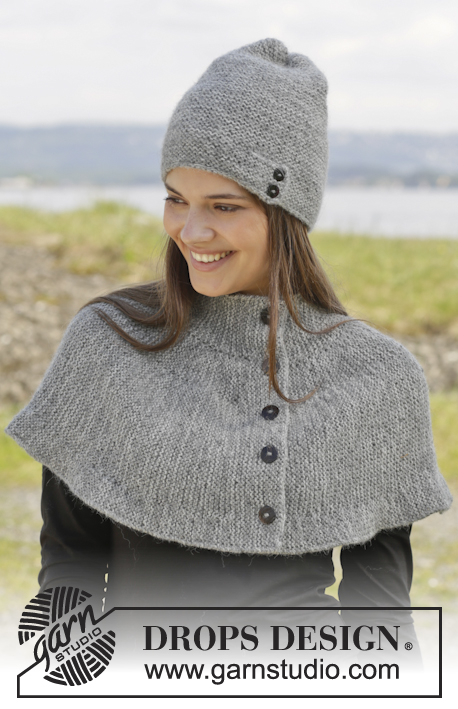

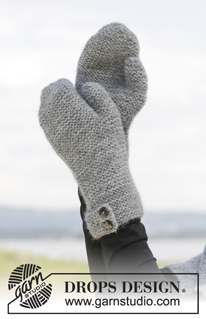
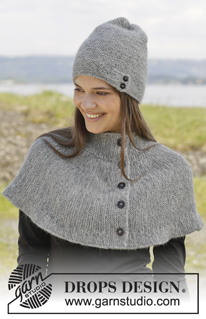



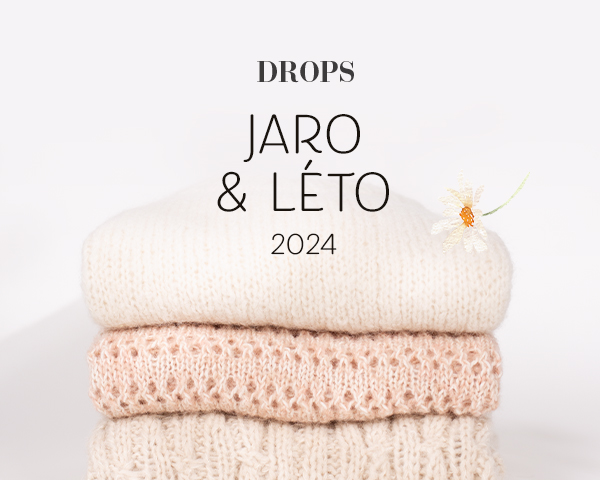


































Komentáře / Otázky (19)
You’ve got to be kidding right - your capelet pattern is incomprehensible. I will be sticking to English patterns from now on. Too bad it is a nice pattern.
27.01.2023 - 23:35Do I work the 64 st and if where yarn cut is back the front has to be sewn up and how to you get the back?????? This is the most confusing pattern I've ever seen and asked 2 knitters of 30 ( Exactly this passage: Work 63-64-67 sts, cut the yarn and turn piece. This is now beg of row (= mid back). Then work in garter st back and forth over all sts from here, ie work over previous beg of row = 94-96-100 sts. How do I do this? I cut the thread and turn cap but then I got a hole in the middle!
26.10.2021 - 20:35DROPS Design answered:
Dear Mrs Carlson, this part of the pattern has been edited, thanks for the info. You will have to cut the yarn after the first 10 sts have been cast off, insert a marker to mark the new beg of the rows and now work back and forth from the marker. See correction text. Happy knitting!
09.11.2021 - 11:19Har stickat 47 cm som angivet på halsvärmare. Rätstickning fram och tillbaka. Hur fortsätter jag? Är den i flera delar? Hur många?
23.09.2019 - 14:41DROPS Design answered:
Hej. Den stickas bara i en del och formas med hjälp av de förkortade varven, du får alltså olika mått på de olika sidorna. När du stickat klart syr du dit knapparna. Lycka till!
24.09.2019 - 11:52How many grams of yarn if working with group c?
30.05.2019 - 02:36DROPS Design answered:
Dear Missy, you can try our yarn converter - or read more about alternatives here. Happy knitting!
31.05.2019 - 10:14Wieviel Wolle benötige ich für den Kragenschal in Größe L/XL?
22.01.2019 - 18:16DROPS Design answered:
Liebe Frau Mädler, die Garnangaben finden Sie unter dem Kopfsprung, dh 200 g DROPS Alpaca /50 g das Knaüel Alpaca = 4 Knäuel in jede Farbe (= 8 Knäuel insgesamt). Viel Spaß beim stricken!
23.01.2019 - 08:53Liebes Dropsteam, natürlich, das verstehe ich und habe auch für die Mütze noch vorhandenes Garn von Ihnen genutzt:-) Ich werde Ihnen weiterhin treu bleiben! Viele Grüße ins Neue Jahr!
03.01.2019 - 09:10Hallo, kann man die Mütze auch in glatt rechts stricken wie bei einer Beanie? Mit Baby Alpaca 100%? Danke im Voraus!
01.01.2019 - 19:59DROPS Design answered:
Liebe Petra, nach dem Rand mit Krausrippe können Sie glatt rechts stricken, die Abnahmen entstehen in cm von der gesamte Höhe und werden so einfach zu folgen. Wir bitten um Verständnis, dass wir nicht Produkte unserer Konkurrenz empfehlen können und dass der Kauf des Materials uns hilft, weiterhin kostenlose Anleitungen zur Verfügung stellen zu können. Wir können Ihnen dann nur empfehlen, DROPS Alpaca oder eine Alternative (siehe unser Garnumrechner) zu benutzen. Viel Spaß beim stricken!
02.01.2019 - 11:44Bonjour, je ne comprends pas les explications pour la fin du tricot du tour du coup: "A environ 47 cm de hauteur total en haut et environ 125 cm le long du bas du bord ... ?"les explications s'arrêtent là, je ne sais pas quoi faire à partir de la, le tricot est petit pour ressembler à la photo et au dessin patron. Merci de m'apporter votre aide :))) Belle journée. Cécile Rose
26.11.2017 - 19:37DROPS Design answered:
Bonjour Mme Hubert, cette phrase a été réécrite, il fallait lire: "L'ouvrage mesure environ 47-49-51 cm de hauteur totale en haut (petit côté) et environ 125-131-137 cm le long du bas (long côté), en mesurant à 4 cm du bord (bord ondulé)." Correction faite, merci. Bon tricot!
27.11.2017 - 10:40När jag vänder efter 64 m mitt bak, så är ju halva mössan rätstickad och halva avigstickad.
02.09.2016 - 21:49DROPS Design answered:
Hej Monika. Nej, du strikker jo riller ikke glat
05.09.2016 - 12:36Beautiful pattern but I do not understand cap .. :( Exactly this passage: Work 63-64-67 sts, cut the yarn and turn piece. This is now beg of row (= mid back). Then work in garter st back and forth over all sts from here, ie work over previous beg of row = 94-96-100 sts. How do I do this? I cut the thread and turn cap but then I got a hole in the middle! Can I after closing those 10 stitches make cap in the round on circular needle? As it is in the pattern 'Bliss'
04.12.2014 - 10:40